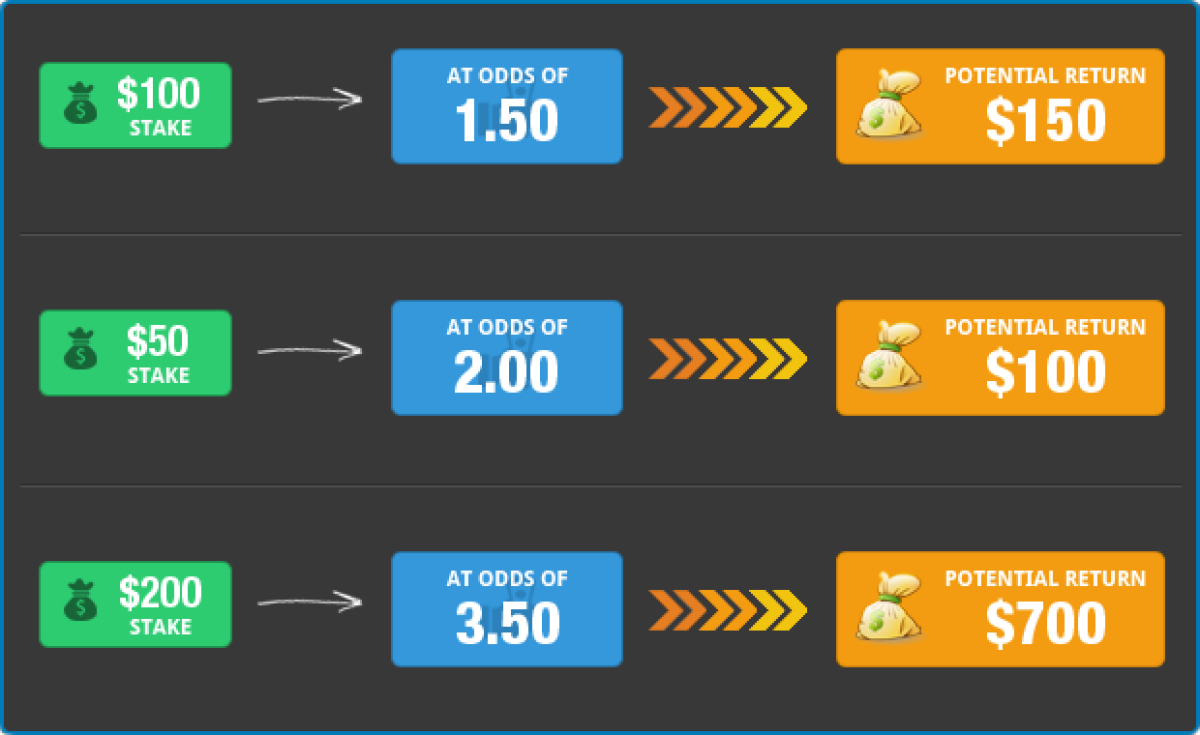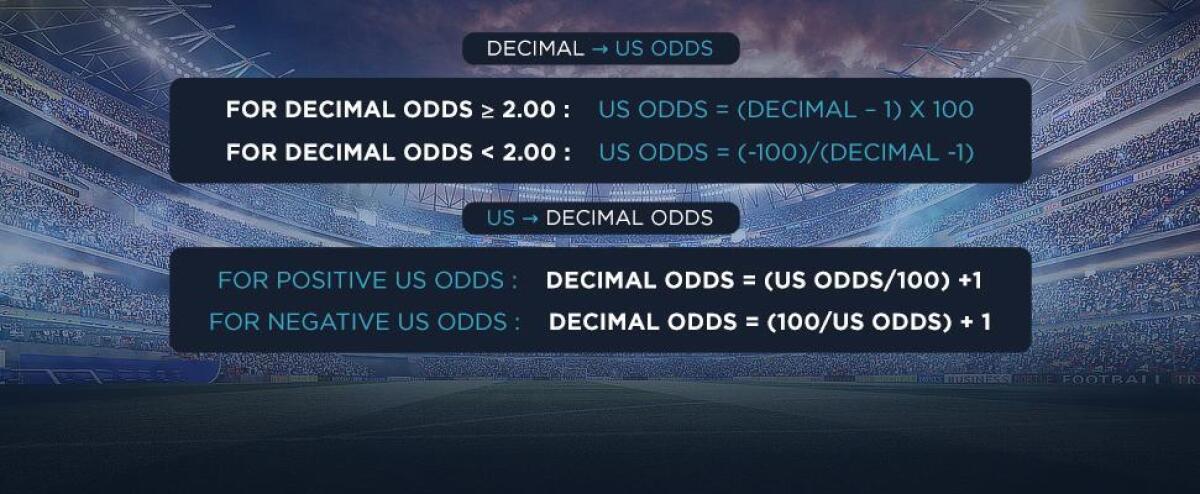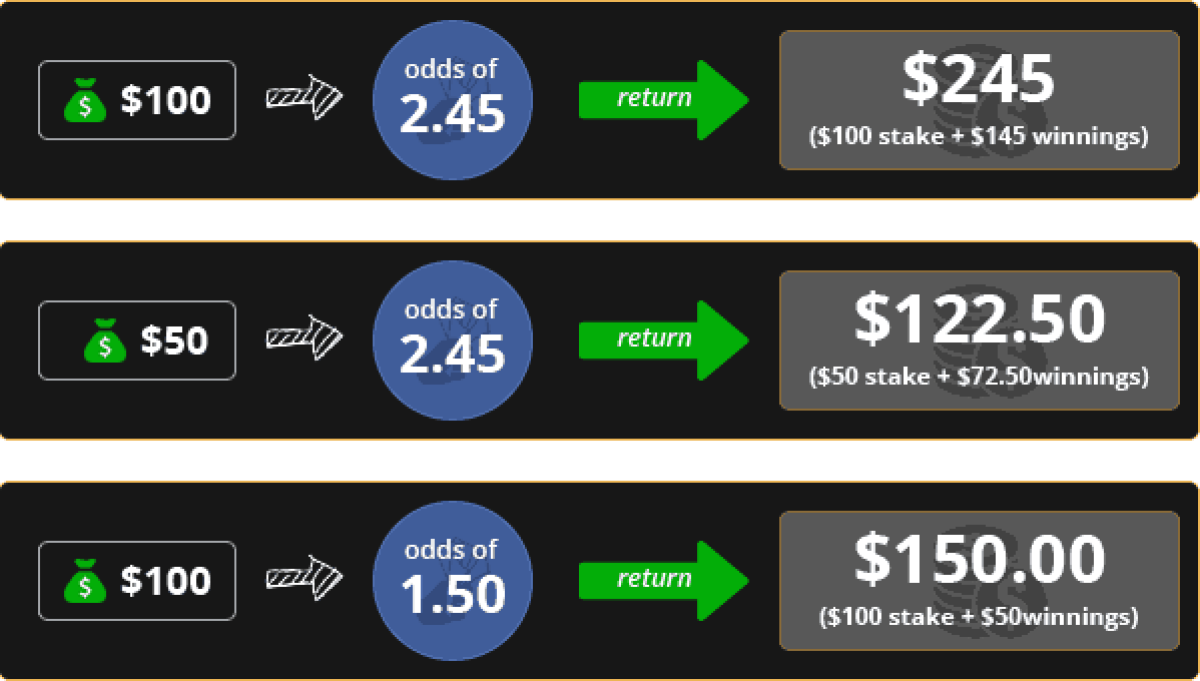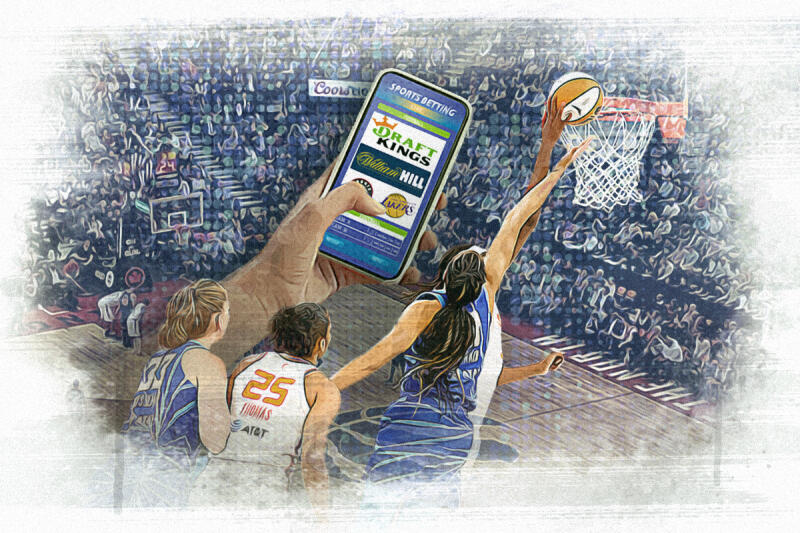Decimal Odds Beginners Guide
What is up? Neighbor Mike here with another great article for you guys, after an absolutely electric article on slot machines, what kind of heat am I going to bring to you guys next? You guessed it! (Or maybe the picture gave it away) Decimal odds! Wait! Don’t go anywhere! It’s not as boring as it sounds, and if you’re serious about sports betting it’s actually quite useful, and if you don’t know why that’s even more of a reason to stick around and dive into this article!
So what exactly are decimal odds, and if I plan on becoming advanced in sports betting why do I need to know what they are? First, similar to the metric system, decimal odds are used just about everywhere else in the world except America, dare to be different I guess. Second, you can learn how to remove the juice (or vig) from the odds so you get the “true odds” of the event occurring which will allow you to see how the bookmaker actually views the bet. This is also known as implied probability. And when speaking of probability, its much easier to convert those odds than it would be trying to do it with standard American odds.
What Exactly Are Decimal Odds?
So let’s go ahead and get the simple stuff out of the way, what exactly are decimal odds? Decimals odds are the odds used by most other books, standard American odds can be converted into them. As you can see below converting your stake to return is much easier as well, especially if you’re new to sports betting. There’s no dealing with a plus’ and minus’ if the odds are under 200, anything over 200 is obviously the underdog. Simply multiply your initial stake by the odds and get your return. There are also a number of conversion calculators out there that can help you do this as well.
For all you visual learners there is a diagram below you can see what exactly it is that I’m talking about.
The How
Now that we know what decimal odds are, how do we use them? If you live in any other place besides the United States you’re fortunately already provided these lines by you’re sportbook so you can go ahead and skip past this part, However, if you are from the good ol’ US of A, let me explain to you how to use them.

The first thing you're going to want to do Is convert the standard odds to decimal odds. Below I will provide a fancy diagram that will show you have to do that:
So put it into practice. It looks like this.
Example:
Favorite conversion
+100: (100/100) +1 = 1 + 1 = 2.00
+235: (235/100) + 1= 2.35 + 1 = 3.35
Underdog Conversion
-110: (100/110) + 1 = 1 + 0.9091 = 1.9091
-152: (100/152) + 1 = 1 + 0.6579 = 1.6579
The Why
And now the moment you’ve been waiting for, the why. What is the point of converting odds and what benefit do we get from it? The most important thing you get from being able to do this providing yourself with true odds. True odds are the actual odds as viewed by the sportsbook, so in essence, you’re seeing the actual line how the Sportsbook sees it. The lines you see when you go to or log onto your Sportsbook are what you call “implied odds” and those odds are crafted so the Sportsbook can be sure that they make a profit generally regardless of the outcome of the bet. And when we strip those odds down with decimal conversion we are able to remove that profit margin so we understand what the books think the actual probability of the outcome of the bet is.

Directly looking at standard American odds you can easily determine what the vig is. If you see a line set at -110 then that little -10 at the end is the cut the books will be taking from your bet. So if you spend $1 to make a bet at odds of -110 you will be getting a return of .90, and Vegas will be making 10 on that transaction.
What Exactly Is The Point Of Betting Odds
To put it simply odds are the price you’re paying to play the game. As mentioned above the book sets a line, then based on what they think the probability of the bet will be they set the price. Using the same example of -110, when the book sets a game with odds like that, they’re basically saying because there is about a 50% chance that you will lose this bet, we will offer it at a low price to entice you to make the betting at such low odds.
You will see this in say a very closely matched hockey game. If the two best teams in the league are playing and everything is even between the teams, like both teams having their starting goalies rolling and there are no significant injuries on either side, it’s safe to say picking between the teams is nothing more than a coin flip.
This is also why most commonly you will see what is considered “the best odds” on totals. Because it’s either going to go over or under the number. There isn’t much more thought to put into it. And the number is often adjusted to keep it at a 50/50 proposition the more money comes in on a certain side.
Now let’s look at college football for the next example. Early in the season, you will see teams like Alabama play a team that clearly doesn’t have a snowball’s chance in hell at winning. Because of that, you will see outrageous lines like -2500. So in order to get a measly $100 back you would need to put $2,500 down. So the message here is, the probability of Alabama winning being the outcome of this event is about 99% and we are going to make you pay for that.
In the chart below you can see the win rate required to be profitable based on the line related to the bets you’re making.
Favorites
| Line | Win % (implied probabilities) |
| -1200 | 92,30 % |
| -1100 | 91,66 % |
| -1000 | 90,91 % |
| -900 | 90 % |
| -800 | 88,88 % |
| -750 | 88,23 % |
| -700 | 87,50 % |
| -650 | 86,66 % |
| -600 | 85,71 % |
| -575 | 85,18 % |
| -550 | 84,61 % |
| -525 | 84 % |
| -500 | 83,33 % |
| -480 | 82,75 % |
| -460 | 82,14 % |
| -450 | 81,81 % |
| -440 | 81,48 % |
| -430 | 81,13 % |
| -420 | 80,76 % |
| -410 | 80,39 % |
| -400 | 80 % |
| -395 | 79,79 % |
| -390 | 79,59 % |
| -385 | 79,38 % |
| -380 | 79,16 % |
| -375 | 78,94 % |
| -370 | 78,72 % |
| -365 | 78,49 % |
| -360 | 78,26 % |
| -355 | 78,02 % |
| -350 | 77,77 % |
| -345 | 77,52 % |
| -340 | 77,27 % |
| -335 | 77,01 % |
| -330 | 76,74 % |
| -325 | 76,47 % |
| -320 | 76,19 % |
| -315 | 75,90 % |
| -310 | 75,60 % |
| -305 | 75,30 % |
| -300 | 75 % |
| -295 | 74,68 % |
| -290 | 74,35 % |
| -285 | 74,02 % |
| -280 | 73,68 % |
| -275 | 73,33 % |
| -270 | 72,97 % |
| -265 | 72,60 % |
| -260 | 72,22 % |
| -255 | 71,83 % |
| -250 | 71,42 % |
| -245 | 71,01 % |
| -240 | 70,58 % |
| -235 | 70,14 % |
| -230 | 69,69 % |
| -225 | 69,23 % |
| -220 | 68,75 % |
| -215 | 68,25 % |
| -210 | 67,74 % |
| -205 | 67,21 % |
| -200 | 66,66 % |
| -195 | 66,10 % |
| -190 | 65,51 % |
| -185 | 64,91 % |
| -180 | 64,28 % |
| -175 | 63,63 % |
| -170 | 62,96 % |
| -165 | 62,26 % |
| -160 | 61,53 % |
| -155 | 60,78 % |
| -150 | 60 % |
| -145 | 59,18 % |
| -140 | 58,33 % |
| -135 | 57,44 % |
| -130 | 56,52 % |
| -125 | 55,55 % |
| -120 | 54,54 % |
| -115 | 53,48 % |
| -110 | 52,38 % |
| -105 | 51,21 % |
| -100 | 50 % |
Underdogs
| Line | Win % (implied probabilities) |
| 1200 | 7,70 % |
| 1100 | 8,34 % |
| 1000 | 9,09 % |
| 900 | 10 % |
| 800 | 11,12 % |
| 750 | 11,77 % |
| 700 | 12,50 % |
| 650 | 13,34 % |
| 600 | 14,29 % |
| 575 | 14,82 % |
| 550 | 15,39 % |
| 525 | 16 % |
| 500 | 16,67 % |
| 480 | 17,25 % |
| 460 | 17,86 % |
| 450 | 18,19 % |
| 440 | 18,52 % |
| 430 | 18,87 % |
| 420 | 19,24 % |
| 410 | 19,61 % |
| 400 | 20 % |
| 395 | 20,21 % |
| 390 | 20,41 % |
| 385 | 20,62 % |
| 380 | 20,84 % |
| 375 | 21,06 % |
| 370 | 21,28 % |
| 365 | 21,51 % |
| 360 | 21,74 % |
| 355 | 21,98 % |
| 350 | 22,23 % |
| 345 | 22,48 % |
| 340 | 22,73 % |
| 335 | 22,99 % |
| 330 | 23,26 % |
| 325 | 23,53 % |
| 320 | 23,81 % |
| 315 | 24,10 % |
| 310 | 24,40 % |
| 305 | 24,70 % |
| 300 | 25 % |
| 295 | 25,32 % |
| 290 | 25,65 % |
| 285 | 25,98 % |
| 280 | 26,32 % |
| 275 | 26,67 % |
| 270 | 27,03 % |
| 265 | 27,40 % |
| 260 | 27,78 % |
| 255 | 28,17 % |
| 250 | 28,58 % |
| 245 | 28,99 % |
| 240 | 29,42 % |
| 235 | 29,86 % |
| 230 | 30,31 % |
| 225 | 30,77 % |
| 220 | 31,25 % |
| 215 | 31,75 % |
| 210 | 32,26 % |
| 205 | 32,79 % |
| 200 | 33,34 % |
| 195 | 33,90 % |
| 190 | 34,49 % |
| 185 | 35,09 % |
| 180 | 35,72 % |
| 175 | 36,37 % |
| 170 | 37,04 % |
| 165 | 37,74 % |
| 160 | 38,47 % |
| 155 | 39,22 % |
| 150 | 40 % |
| 145 | 40,82 % |
| 140 | 41,67 % |
| 135 | 42,56 % |
| 130 | 43,48 % |
| 125 | 44,45 % |
| 120 | 45,46 % |
| 115 | 46,52 % |
| 110 | 47,62 % |
| 105 | 48,79 % |
| 100 | 50 % |
So why are odds set like this and what does that mean for me? Well, because there is a vig on each bet, in order to overcome the fact you aren’t getting a 1 to 1 return on your money you need to win at a certain percent in order to be profitable. So going back to our initial money line example. If we only make bets at -110 regardless of what exactly we are betting on. You would need to win at a rate of 53% to turn a profit in gambling. This ultimately is why the odds are what they are and why they are used.
Bookmakers aren’t going to allow you an easy path to making money by taking huge favorites over and over. Now, refereeing back to the Alabama bet and speaking in business terms, its going to cost you $2,500 to make $100, and this business transaction has to go right 25 times for you to get your investment back, and if it goes bad 1 time in between those 25 transactions you’re now down $2,500. So now the picture is coming together on how the odds are crafted to insure you don’t become profitable.
You bet on things that have about a 50/50 shot of happening, or you pay to play the game with the big favorites while running the risk that a loss will undo all the winning you previously did. Or of course, we can also bet on the underdog, but I’m sure I don’t need to explain at this point books aren’t handing out free money by allowing us to make above our investment betting on underdogs.
So The Games Against Us, What Do We Do?
And that my friends is the point of the article. We know what decimal odds are, we know how to convert them, we know what standard American betting odds are, and the relationship between the book and gambler. So how does everything fit together?
Knowing how to find how the book actually views the probability of a bet winning or losing gives us an actual idea of if there is any value in the bet we are making. The line is saying Vegas thinks a bet should be set at +150 meaning we have about a 40% chance of winning. But do we really stand a 40% chance of winning? Let’s go ahead and break it down
Since we have already established what decimal odds are and how to convert them we will go ahead and start with that. We will go ahead and go with 2.5.
- 1/2.5 = 0.4
- 0.4 x 100 = 40%
Now that we are able to see that we stand a 40% chance of winning this bet, we begin our sports handicapping. With this information, we look at whatever research material we have and decide if the bet has any value and is worth betting on.
An example I like to use is strike-out props for baseball pitchers in the MLB. We can see a total with a line of -170 with a strike-out total of over 6.5. When we break down our number without brand new decimal conversion skills we see that a line of -170 implies that we have a 62.96% chance of winning our bet. Sounds great! Or is it? Let’s look a litter deeper. Our total is 6.5, meaning we need to hit a total of 7 to cover our bet, but when we do research we see that our pitcher has only hit a total of 7 in 53% of his starts.
So if our pitcher is hitting his total only 53% of the time, then is there any value in playing a bet at -170? Remember, going back to our discussion on the Alabama money, because of the way vig works we need to win our -170 money line bet 63% of the time in order to be profitable, how realistic is it that we do that when our research shows that our pitcher has reached our required total only 53% of the time. It obviously doesn’t so this in fact is not a good bet to make.
Now sure, we can go on and not make the bet and kick ourselves when it hits, but statically we have proof that in the long run making a bet like this will not work out for us.
So this is how we go about using decimals odds to find the expected and true value of a play we are looking to make. And hopefully, from that example, we can see how important it is and how it can certainly save us from at least losing some money in the long term. In addition to that, we can also flip the situation, had the numbers been better and say our pitcher was hitting his total 80% of the time, then that’s a different story.
Obviously, there is value in betting on something that is supposed to occur 62% of the time when we have proof it hits closer to 80%. So we can also use this to find value in things rather than figure out that there is no value. It’s a very good thing to know either way you look at it.
Using Decimal Odds To Calculate Payout
Another good tool is figuring out how much money you’re going to make. Now, a very experienced gambler can convert American odds in their head, it’s not the most difficult thing once you get used to it but multiplying two numbers is still easier than trying to figure out how much money you’re going to make -150 bet, or the reverse a +150. I know for the most part I covered this, however, I just wanted to have its own stand-alone part so anyone could reference it quickly.
Below is a chart for a solid visual:

Fractional Odds
As implied in our next part, there is in fact another set of odds, fractional odds. Let’s first show how to convert standard American odds to fractional odds:
- Positive odds ÷ 100 = Fractional odds
- Let’s convert +200 to fractional odds.
- 200 ÷ 100 = 2/1
- When dealing with negative odds, this is the formula that you should use:
- -100 ÷ Negative odds = Fractional odds
- Let’s convert -200 to fractional odds.
- -100 ÷ -200 = 1/2
Now that we have done that, let’s convert those fractional odds to our decimal odds:
- Divide the fractional odds, then add 1.
- So 4/5, when converted to decimal odds, will be:
- (4÷5) + 1 = 1.8, For the most part, I just went and covered this because we are covering the various types of betting odds. For the most part, knowing fractional odds is only beneficial if you’re into horse racing, or if you live in the few outlier countries that have this as their standard odds presentation. Regardless of the goal no matter what your standard odds are is to convert them to decimals.
Bet Types
Now that we have all the odds covered, What kind of bets can we make with the odds we just learned to convert? Let’s get into it!
- Moneyline: Money line betting is the face of betting. It is a bet that indicates the chances teams have against each other straight up to win, lose, or in some cases tie.
- Spread: A spread is a bet used to give gamblers an option to take action on a game with a very high favorite where there might not have been any value in a bet otherwise. A person might have no interest in betting on Alabama versus Compton Tech at -2500 for various reasons. However, seeing them at -110 -44.5 offers a little more bang for your buck.
A “-“ means the team has to win by the indicated number. If the number is -6.5 they have to win by 7 or more for the bet to cash.
A “+” means the team can not lose by the indicated number. If the number is +6.5 the team cannot lose by any more than 7 points for the bet to cash.
In some cases, you will get an even number like 6, if a team is winning or by 6, this bet will be voided and called a “push” or basically a tie.
- Totals: The name explains what it is. When betting on totals, we are doing just that, betting on totals. If the total of a hockey game is set at 6.5, in order for the over to cash 7 goals need to be scored. In order for the under to cash, no more than 7 goals need to be scored.
- Prop Bets: A prop bet is basically a novelty bet surrounding some kind of occurrence within the game you’re betting on. For example, you can be on Alexander Ovechkin to score a goal during a hockey game. Or you can bet on him not to score a goal. Prop betting nowadays is very popular and there are a ton of prop options for most games.
- Live Betting: Live bets are bets made live during the game. Halfway through the second inning if you feel like the Yankees stand a good chance to win the game, you can bet them live during the game. Often this is used to get a better money line number as well.
The Bottom Line
In the end, if you stand any chance at all of being a profitable gambler, or even if you’re a hobbyist who doesn’t want to just completely through their money away. Learning how to find the value with decimal conversion is almost an essential tool. There is a ton of research that you can do when trying to figure out what team you want to bet on, the total, or even before you decide who’s going to score a touchdown. But there is a no more important bit of research than to figure out how likely, or unlikely it is for your to bet to cash.
Tools
Below I will include a few helpful tools.
Firstly I will provide a link for a parlay calculator. Even in 2022 a lot of websites and betting apps are kind of clunky especially when it comes to putting together parlays. So here is a very smooth and easy-to-use parlay calculator
And of course last but not least, what better thing to do after posting diagrams and explaining to everyone how to manually convert fractions and standard American odds into decimals, then provide you with a betting calculator to do it for you?
Q & A
Q: Is using decimals really that important?
A: Yes, I cannot stress this enough.
Q: Should I set my default book settings to decimals?
A: Yes, after you get used to it it will make using decimals much easier for you.
Q: What are Vegas Odds?
A: Vegas odds are odds provided directly by Vegas itself. Some books make their own odds, while others acquire them from other places, such as Vegas.
Q: Do I really need to understand the odds?
A: Yes, that would be like trying to walk without learning to crawl first.
Q: What does it mean if the odds are +200
A: The + indicates that the bet is for an underdog or something that is not favored to happen. For everyone $100 you put down you will get $200 in return should the bet cash.
Q: Do books and casinos like it when you find true odds
A: Absolutely not, they despise it!
Our editorial content strives to be highly informative and educational to our audience, especially for visitors who are new or relatively new to analyzing and predicting sporting event results. All of our content is created by informed writers with backgrounds in their subject area and reviewed for omissions or mistakes.
Our editorial team is run by individuals with many years of experience in digital publishing, editorial, and content production. Our editorial content is always marked clearly in any instances where it may be sponsored by a third party, though it is still reviewed by our staff to ensure it remains consistent with our company mission.
- Popular
- Latest







